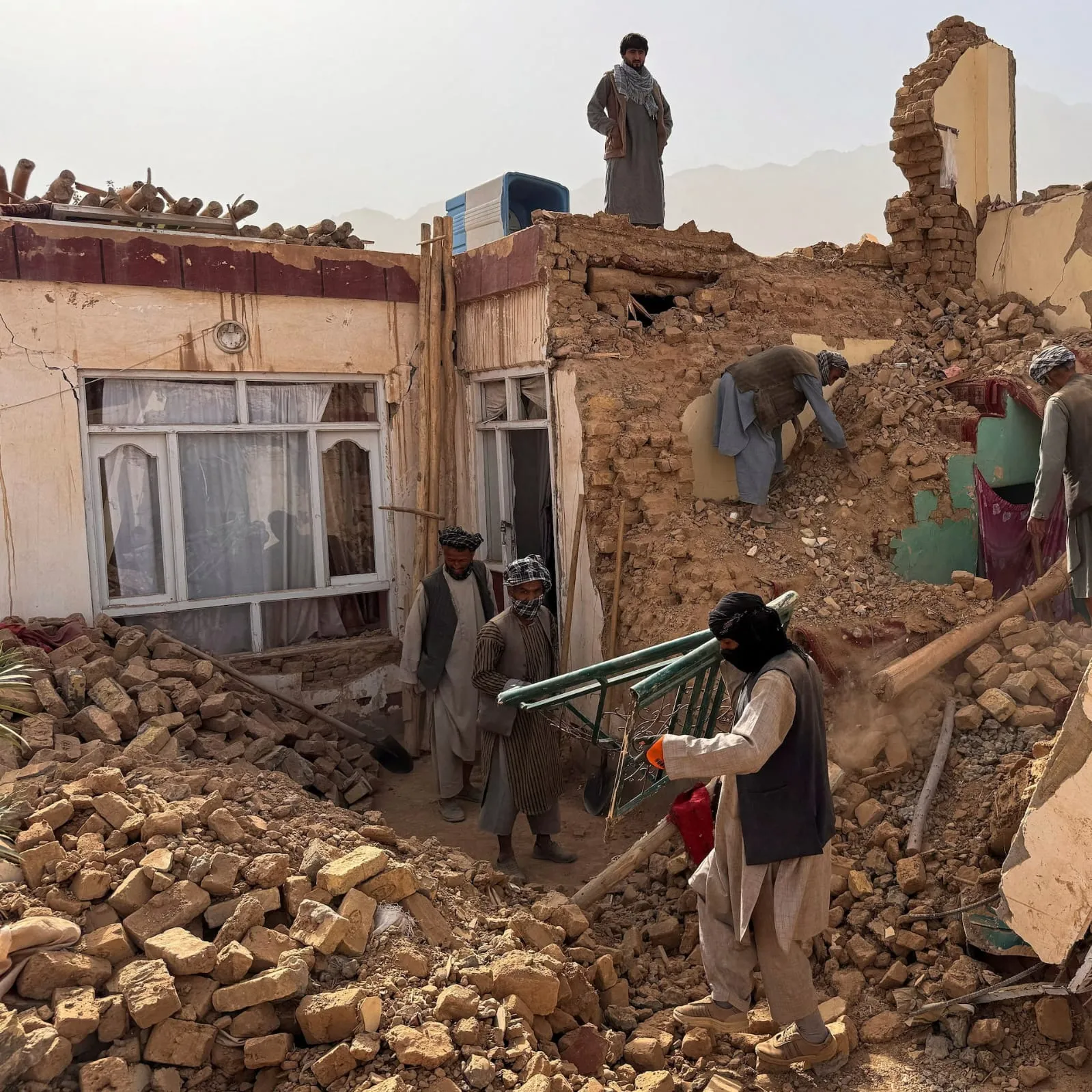Published 03 Nov 2025
Earthquake Today: At Least 20 Killed, 320 Injured as 6.3-Magnitude Quake Strikes Afghanistan
A powerful 6.3-magnitude earthquake struck northern Afghanistan near Mazar-e-Sharif on November 3, 2025, killing at least 20 people and injuring more than 300. Rescue operations are underway as authorities assess widespread damage.

A Strong Quake Shakes Northern Afghanistan
A powerful 6.3-magnitude earthquake hit northern Afghanistan early on Monday, causing widespread panic, deaths, and destruction across several provinces. The tremor struck near Mazar-e-Sharif, one of the country’s largest cities, around dawn when many people were still at home.
According to local authorities, at least 20 people were killed and more than 320 others injured, with officials warning that the toll could rise as rescue teams reach remote villages. Many of the injured were reported to have fractures, head injuries, and trauma from collapsing buildings.
The quake lasted only a few seconds but was strong enough to flatten mud-brick homes, crack concrete buildings, and send terrified residents running into the streets.
Massive Structural Damage Reported
Witnesses described scenes of chaos as walls crumbled and power lines fell. Several houses in Balkh and Samangan provinces were completely destroyed, while dozens of public buildings developed deep cracks.
In Mazar-e-Sharif, parts of the historic Blue Mosque — a major cultural landmark — were damaged. Tiles fell from its domes, and one of its minarets developed structural fractures.
Emergency teams also reported damage to rural areas where most homes are made of clay and wood, materials that cannot withstand strong tremors. Roads leading to mountainous regions were temporarily blocked due to small landslides triggered by the quake.

Rescue and Relief Operations Underway
Rescue teams, supported by local volunteers and the military, are working tirelessly to locate survivors trapped under the rubble. Hospitals in the affected provinces have been placed on high alert, and emergency wards are filled with patients.
Medical supplies, food, and temporary shelters are being transported to the quake-hit regions. The government has requested urgent assistance from international humanitarian agencies to support relief efforts and prevent further casualties.
Authorities fear that many villages near the quake’s epicenter may still be cut off from help due to damaged communication lines and blocked roads. Helicopters are being used to airlift the injured and deliver relief packages.
Nighttime Aftershocks and Fear Among Locals
Residents have reported multiple aftershocks since the main tremor, adding to fears of more structural collapses. Thousands of people have spent the night outdoors in open areas, fearing another powerful quake.
With temperatures dropping sharply after sunset, families are struggling to stay warm. Local mosques and schools have opened their doors to shelter displaced people. Aid agencies are distributing blankets and food as emergency shelters are being set up in stadiums and public fields.
Afghanistan’s Earthquake History
Afghanistan sits in a seismically active zone, prone to frequent and sometimes deadly earthquakes due to its location near the collision boundary of the Indian and Eurasian tectonic plates.
In recent years, the country has witnessed multiple devastating tremors. Weak infrastructure, densely packed mud-brick homes, and limited emergency resources often turn moderate quakes into humanitarian crises.
The latest quake serves as another reminder of the country’s vulnerability and the urgent need for improved disaster preparedness.
What Authorities Are Saying
Government officials have expressed deep sorrow over the tragedy and assured citizens that relief and recovery efforts are being prioritized. Local leaders urged people to remain calm and cooperate with rescue teams.
Authorities have also warned against returning to damaged homes until proper safety inspections are completed. Engineers are assessing the risk of further collapses as aftershocks continue to rattle the region.
Voices from the Ground
Residents of Balkh described the moment the quake hit as terrifying. “It felt like the ground was breathing,” said one survivor. “Everything moved at once — the walls cracked, and we ran without even thinking.”
In rural districts, people reported that entire clusters of houses had collapsed, burying livestock and food supplies along with belongings. For many, this disaster has left them homeless with winter fast approaching.
In Summary
- Magnitude: 6.3
- Epicenter: Near Mazar-e-Sharif, northern Afghanistan
- Casualties: At least 20 dead, over 320 injured
- Damage: Homes, mosques, schools, and roads affected
- Rescue Status: Ongoing operations with hospitals on high alert
- Aftershocks: Several mild tremors reported overnight
Conclusion
Afghanistan is once again reeling from the impact of a powerful earthquake that struck without warning. As the death toll continues to rise and rescuers race against time, the tragedy highlights the fragile infrastructure and humanitarian challenges facing the nation.
Families across northern Afghanistan now face an uncertain future — mourning their loved ones while struggling to rebuild their lives. Relief teams are working under difficult conditions, but hope remains that swift assistance can help reduce further suffering and prevent another humanitarian crisis in the quake-hit regions.

Dr Sudheer Pandey
94% of readers found this post helpful
0 Votes
Click a star to add vote